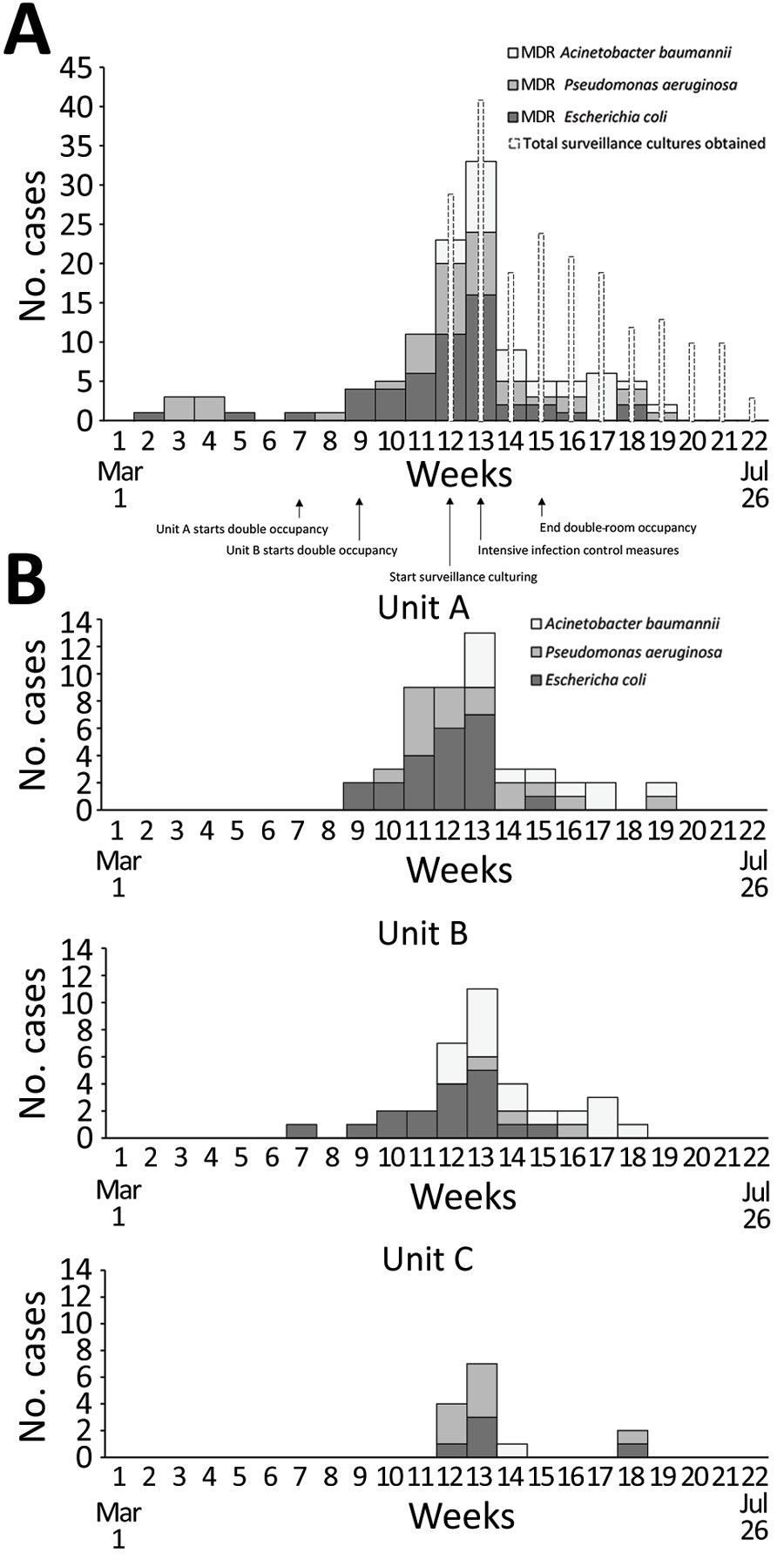Volume 27, Number 4—April 2021
Research Letter
Rapid Spread and Control of Multidrug-Resistant Gram-Negative Bacteria in COVID-19 Patient Care Units
Figure

Figure. Incidence of patients with a clinical or surveillance culture-positive result indicating MDR or cefepime-resistant Escherichia coli, MDR Acinetobacter baumannii, or MDR Pseudomonas aeruginosa >48 hours after admission to a hospital in Maryland, USA, by week, March 1–July 31, 2020. A) Overall hospitalwide incidence (118 total cases, with 98 positive cultures belonging to outbreak units). Narrow white bars represent the number of surveillance cultures obtained during the outbreak and shaded bars show positive cultures by organism. Arrows show timing of relevant events for transmission and control. B) Incidence of outbreak cases (n = 98) stratified by the 3 units affected by the outbreak. Organisms nonsusceptible to >2 of piperacillin/tazobactam, cefepime, or carbapenem are considered MDR. Patients are included for the first positive culture per organism and therefore might be included more than once. MDR, multidrug-resistant.